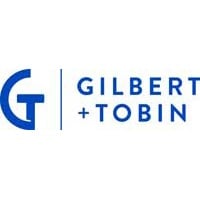

General counsel, Australia and New Zealand | Bauer Media





Adrian Goss
General counsel, Australia and New Zealand | Bauer Media
Bauer has undertaken a number of small asset divestments over the past two years. While, individually, these aren’t significant, collectively they have moved the company toward its strategic priority of focussing on certain key publishing categories while realising value for under-utilised assets. All of these divestments have been undertaken without external support.
On the acquisition front, Bauer’s purchase of the majority of News Limited’s homes and interiors portfolio has been important in creating scale efficiencies and, again, focussing the company of one of its key strategic publishing categories.
For litigation, Rebel Wilson’s high-profile defamation proceedings were particularly significant. Few media trials have involved such an intense level of media interest. A strangely poor outcome at first instance created a number of internal stakeholder issues at both a local and head office level. Pleasingly, on appeal most of the award of damages was overturned and Wilson’s application for special leave to appeal to the High Court was declined. Bauer was very well supported by Johnson, Winter & Slattery throughout the proceedings. The matter highlighted the importance of taking into account non-legal aspects of litigation, including managing PR and communications.
The most important factor in building strong relationships with business partners is getting to know their businesses at an operational level. Take the time to understand the day-to-day challenges that business partners face, both through formal engagement in management meetings and training and informal engagement. At a very basic level, be approachable – it’s easy to forget that, for many people within a business, dealing with a legal issue will be a foreign and stressful experience. If you remove some of that stress by ensuring that those people feel appropriately supported, you will be well rewarded through strong relationships.
As a small legal function, the return on investment on legal tech – both from an expense and effort perspective – can be difficult to justify and it’s easy to over-engineer the role of legal tech. We have implemented Docusign and use it across a number of parts of our business. I use the (excellent and, for the basic functionality, free) time recording software, Toggl. While I’m not overly prescriptive about time recording, I find that it does help with time management, prioritisation and providing useful data about what I’m working on.
We will continue to see an evolution in the models under which external legal services are provided. That evolution is likely to include greater consolidation of law firms to address the challenged partnership model. It will also include a growing prevalence of offshore legal services, further adoption of and innovation in “new law” firm models and increased automation of legal services through technology.
A related issue is that, for better or worse, we are likely to see greater casualisation of the in-house legal workforce. In this regard, in-house legal teams will follow the path that in-house technology teams have, where there is a high reliance on short-term engagement of consultants on a project by project basis. While this will necessarily involve a decrease in job security, it may also involve increased project-based remuneration and will give in-house teams greater flexibility to adapt to changing workloads and subject matter.
It’s critical to build a strong partnership with external advisors. In particular, to set clear expectations regarding expected deliverables and the way in which communications will flow.
A focus on building strong relationships with a small number of external advisors will tend to lead to greater bargaining power with regard to costs and to greater efficiencies. The latter arises because external counsel who are regularly engaged with your business will develop a greater understanding of the business’s drivers and expectations.
As a general counsel, I have significant influence on Bauer’s diversity and inclusion policies. This influence is bolstered by being a member of Bauer’s executive team. At my prompting, Bauer became a signatory to ACC Australia’s Diversity & Inclusion Charter. Through our approach to briefing of external counsel, including barristers, Bauer Legal promotes diversity and inclusion across the broader legal community.
When looking at the legal profession as a whole, the in-house sector leads the way in relation to gender equity. We should be rightly proud of that and continue to ensure that it influences change more broadly through, for example, equitable briefing policies. In many ways, the challenge mirrors that of getting more women into leadership positions across corporate Australia. Greater workplace flexibility and more family-friendly practices (for men and women) will go a significant way to addressing the challenge.